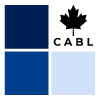About CABL
How it all began
A national network for Black legal professionals
The birth of the Canadian Association of Black Lawyers was inspired by the existence and prior experience of two quite different black lawyers organizations, the Delos Davis Law Guild of Ontario (DDLG) and the National Bar Association (NBA), the US national association for black lawyers.
The DDLG, which is no longer active, was Ontario’s first known provincial bar association dedicated to the needs of Black lawyers and judges. The work of DDLG’s members had a positive impact on the founders of CABL who followed in the tradition of the DDLG and wanted to form a national organization of Black lawyers across Canada.
The NBA is the largest national association of predominantly African American lawyers and judges in the United States. Established in 1925, the NBA represents a professional network of over 20,000 lawyers, judges, educators and law students.
Inception
In June 1994, the NBA, under the leadership of its president Paulette Brown, held an international meeting in Toronto. The organization was hosted in Toronto by the DDLG. Acting on the spirit engendered by the 1994 stop in Toronto, in August 1995, Canadian Black lawyers Audrea Golding, Chris Wilson, Sonja Salmon (recent graduates. of Osgoode Hall Law School), Sandy Thomas (lawyer with the Department of Justice) and Michael Tulloch (now Justice Tulloch, the first Black Court of Appeal Justice), who at the time had recently entered private practice after leaving the Provincial Crown Attorney’s office in Toronto), attended the NBA’s Annual Convention in Baltimore, Maryland. These two interactions with the NBA fostered an interest among them and a number of other Black lawyers in Toronto to establish a national organization in Canada similar to the NBA. Over the course of the year 1995, several discussions and consultations with members of the Black bar in Canada (including, members of the DDLG and Canadian law students) and with representatives of the NBA took place to gather support for the formation of a national Canadian association of Black lawyers, as a means to further professional networking and to help our community. After these meetings, CABL was incorporated in March 1996 as a non-profit corporation whose members would constitute the national association of Black lawyers.
Some of the founding members of CABL included Roger Rowe, Winston Mattis, Sandy Thomas, Patricia DeGuire, Lynda Searles, David Mercury, Sonja Salmon and Chris Wilson. The initial Interim Board consisted of: Sandy Thomas-President; Winston Mattis-Vice-President; Patricia DeGuire-Treasurer; Roger Rowe-Secretary; Sonja Salmon-Member at Large, and; Chris Wilson-Member at Large.
Between its incorporation in March, 1996 and its official launch in January 1997, CABL drafted its provisional strategic plan and participated in the following initiatives:
- Established the Michael Kelly Memorial Award along with the Class of 1990, University of Toronto Faculty of Law, which is a scholarship for 2nd or 3rd year Black law students at the University of Toronto, Faculty of Law in honour of the memory of Michael Kelly (Class of 1990);
- Commenced a monthly speaker series;
- Participated in the University of Toronto’s Summer Mentorship in Law Program for visible minority high school students;
- Participated in Each One Teach One’s Black Youth Mentoring Program and Career Day;
- Co-sponsored a dinner on November 9, 1996 at the Canadian Bar Association – Ontario (now the Ontario Bar Association) to honour Dr. (now Hon.) Juanita Westmoreland-Traore, Dean, University of Windsor Faculty of Law and the first Black person to attain a law deanship in Canada;
- Co-hosted with the Law Firm of Michael H. Tulloch and Associates a reception for Willie E. Gary, Plaintiff’s counsel in the landmark case of O’Keele v. Loewen Group, a Mississippi decision in which $500 million in damages was awarded to the plaintiff;
- Established further links with the NBA.
History of Past Presidents
- Sandy Thomas (Interim President): March 1996 to first AGM in September 1997
- Roger Rowe: September 1997 to September 1998
- Phillip Sutherland: September 1998 to September 2001
- Michael Tulloch : September 2001 to September 2003 (until Superior Court of Justice appointment)
- Sue-Lynn Noel: October 2003 to January 2005
- Jacqueline Beckles: January 2005 to January 2006
- Frank Walwyn: January 2006 to January 2011
- Andrew Alleyne: January 2011 to January 2013
- Arleen Huggins: January 2013 to January 2015
- Donna Walwyn: January 2015 to January 2017
- Shawn Richard: January 2017 to January 2019
- Lori Anne Thomas: January 2019 to October 2020 (until Ontario Court of Justice appointment)
- Raphael Tachie: October 2020 to June 2023
- Kyle Elliott: July 2023 to present
Reaching Out
In 2003, in a move to become more inclusive, CABL accepted a proposal by Sue-Lynn Noel (then a director and later President) and Geary Tomlinson to create a Young Lawyers Division (YLD) of CABL. The successful launch of the YLD gave those young lawyers called to the Bar and leaving their association with the Black Law Students Association of Canada a first home and a collective voice in the direction of CABL. Bringing young lawyers into the CABL fold had the added benefit of widening the scope of perspectives to not only young lawyers but also young lawyers in jurisdictions outside the Toronto area where the majority of CABL members then resided.
Diverse Nation-Wide Representation of Black Professionals
Over its 25 years, CABL has successfully created a Canada-wide network of Black legal professionals with diverse skillsets, experiences, and backgrounds. Since 2004, the organization has been able to grow its presence further by opening chapters in Ottawa, British Columbia, Nova Scotia, Alberta and Quebec. As of 2022, CABL has seen its membership increase across 5+ provinces and 19+ practice areas. CABL’s membership is composed of individuals representing a range of legal practices, career levels, languages, geographic locations, ethnicities, and gender identities.

